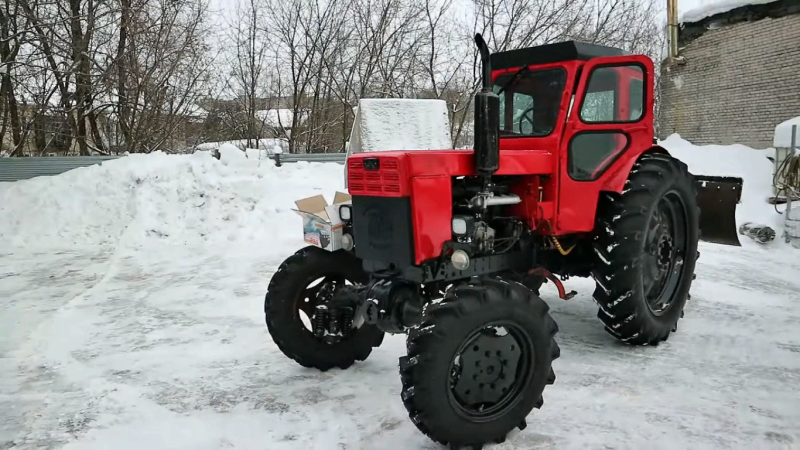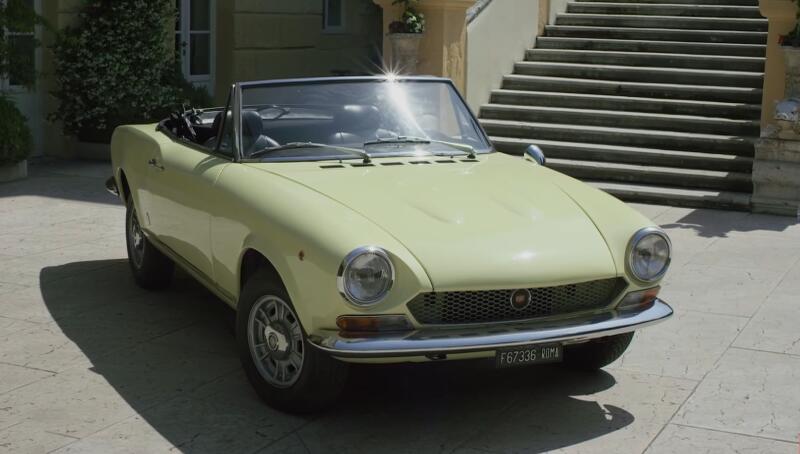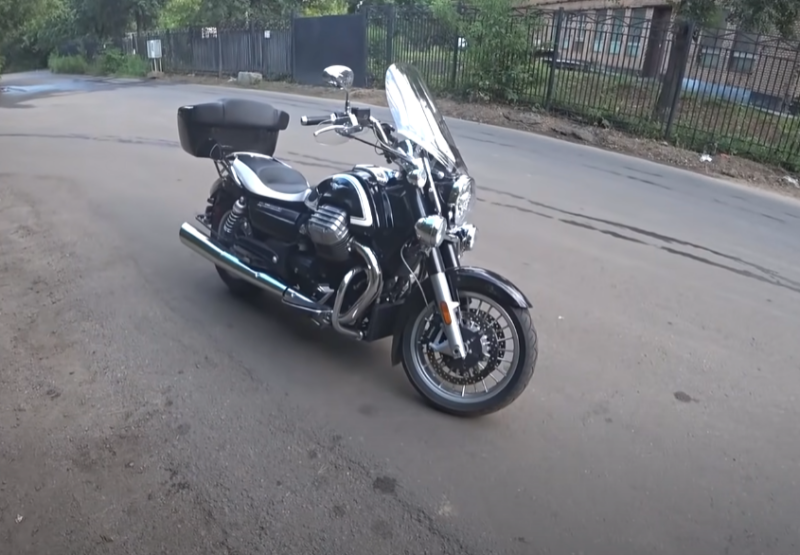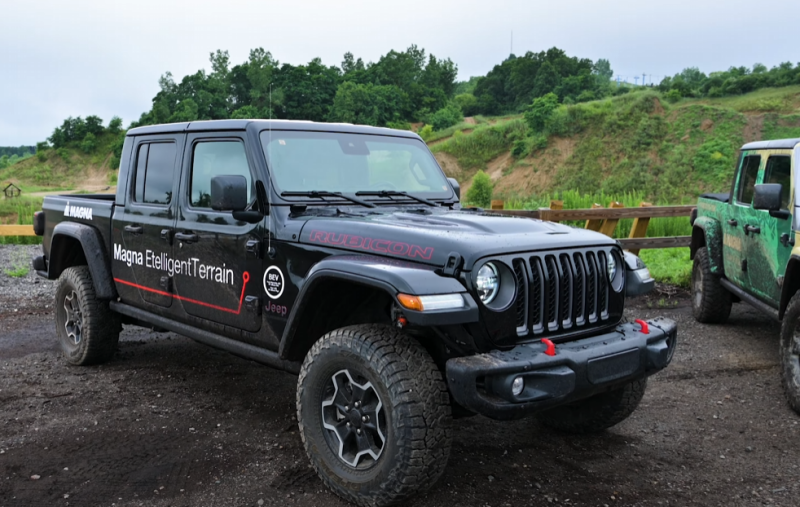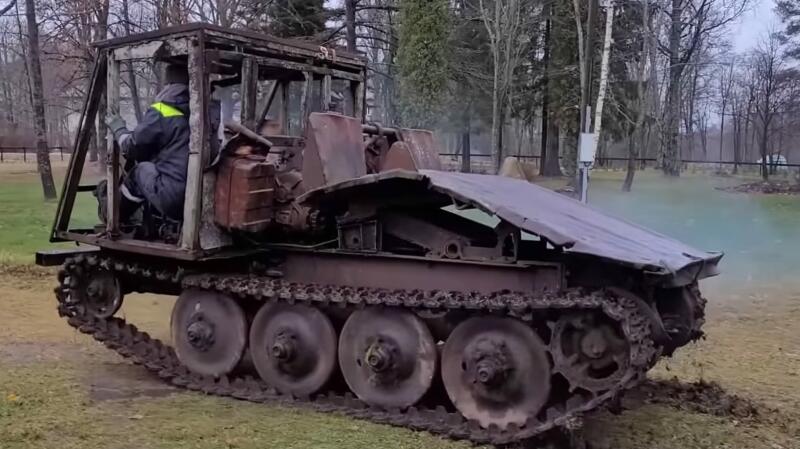As it turned out, track technology has a very narrow application (despite the fact that it is a clear advantage on certain types of soil). But for utility work it is completely unsuitable, due to its low speed and drive, designed only for off-road use.
 Hard worker tractor T-40. Photo: youtube.com
Hard worker tractor T-40. Photo: youtube.comBy that time, the Soviet government was pursuing a policy of deep cultivation of the village, which included such a benefit of civilization as asphalt. There was more and more such coverage on domestic collective farms, and it required wheeled agricultural equipment. Therefore, it is not surprising that many enterprises have undergone radical re-profiling. The Lipetsk Tractor Factory was also included in this number: by the early 60s, the plant’s priority was firmly on models of wheeled tractors.
Constant improvements, in search of the ideal
Manufacturers started with their wheeled first-born T-25, introduced in 1958. But it was only a prototype, which they tried to carefully refine over the next two years. This led to the appearance of the T-30, which went into mass production at the beginning of the next decade.
This fact did not stop the plant’s engineers, who continued to improve the equipment of a new profile for the enterprise. A little later, they added power characteristics to it, changing the index to T-35. The period of formation was not in vain, allowing specialists to approach the optimal solution, which prepared an amazing centenarian.
By 1961, the designers presented a balanced version, free of “childhood diseases” and incorporating all the best from its predecessors - the T-40 wheeled tractor. It was he who became the real mass model of the plant, the production of which lasted for several decades.
.Four years later, the company saw the need of some users for modifications with improved cross-country ability. The all-wheel drive version that appeared at the same time had a name with a letter addition - T-40A. It turned out to be quite in demand in several directions at once, often not related to work in rural areas. Most of all, it was chosen by road workers, who upgraded it to the KO-705 universal cleaning machine. Further successful use allowed expanding the scope of application:
✅ universal road equipment
✅ tractor loaders
✅ construction bulldozers
Despite the fact that successful transport found its application in urban environments, its main purpose remained rural labor. From the very beginning, the equipment was oriented for plowing in greenhouses or gardens and field (or transport) work on light soils. Over time, other areas for using the T-40 were found:
✅ winter snow removal work
✅ harvesting
✅ mechanical mowing
✅ processing of row crops
✅ throwing haystacks, etc.
All this turned out to be possible thanks to the availability of a wide range of attachments adapted for use on the basis of the T-40 and its numerous modifications that appeared later. Therefore, technology has not lost its relevance in the post-collective farm period.
 Cabin of the T-40 tractor. Photo: youtube.com
Cabin of the T-40 tractor. Photo: youtube.comMany newly emerging farmers actively used a reliable and multifunctional tractor in their small farms. Let's pay closer attention to its technical side.
Indicators and characteristics of the T-40
In the design of the tractor, the manufacturer used a semi-frame type load-bearing system. At that time, it turned out to be a fairly fresh technical solution, influencing the reliable use and longevity of most units of the T-40 produced. They also solved the issue with the power unit for it quite well:
✅ 4-cylinder diesel
✅ air cooling
✅ start: electric starter or gasoline “starter”
✅ working volume - 4,15 l
✅ power – 40 (D-37M) or 50 (D-144) l. With
The tractor received a complex gearbox design in accordance with its multi-purpose use. It was a four-speed with seven speeds and a reverse manual transmission. The last element made it possible to have the same number of speeds both in forward and reverse. This was a clear advantage of the T-40 over similar models of that period. The overall picture was complemented by PTOs: independent, multi-mode, side-mounted and rear-mounted. Here are some other technical indicators:
✅ tractor weight – 2,6/2,75 t (depending on modification)
✅ speed fork – 1,62-26,7 km/h
✅ closed metal cabin with rear installation
The tractor had a classic layout for such equipment: small front guides and huge rear drive wheels (except for the all-wheel drive version). The latter, in addition to the increased diameter, also received a rigid suspension and a herringbone tread.
 Instruments of the T-40 tractor. Photo: youtube.com
Instruments of the T-40 tractor. Photo: youtube.comIt was not in vain that the specialists chose an option that not only provided good grip on the surface, but also better off-road maneuverability. The successful development of production made it possible to master the assembly of various variations of equipment.
A number of modifications and three and a half decades on the assembly line
Lipetsk Tractor Plant has always been one of the city-forming enterprises of the second largest city in the Black Earth Region. Although over its history the plant produced many both tracked and wheeled models, the T-40 became the most popular. This fact was facilitated by many of its modifications. Their number (except for the already mentioned all-wheel drive T-40A) also included:
✅ T-40AN (ANM) – for areas with noticeable elevation changes and slopes
✅ T-50A – for working in tandem with a loader
✅ T-40M - modernized, with improved drive (D-144)
✅ T-40AP - utility version with D-144 engine
Each of them had a number of design differences, which were introduced depending on the specific future use of this modification. For example, those working on the slopes of the T-40AN received reduced ground clearance and a lower cabin.
 Diesel engine D-144. Photo: youtube.com
Diesel engine D-144. Photo: youtube.comYet the most famous of them was the T-40AM. This is not surprising, because the all-wheel drive version with an engine of increased power has received an even wider scope of application. Some of the customers even noted its ability to work in wetlands. This made it possible to use this modification when clearing forests.
Over time, the equipment was also exported, receiving the proud name T-40A Super. The fact that this is not just a cunning commercial move, but a real assessment of the tractor’s capabilities, was confirmed by farmers from distant New Zealand. They noted an interesting feature, saying that they prefer Lipetsk models “to work on the tractor, and not under it.”
We have already said a lot about the advantages of the T-40. It is worth adding to this that it turned out to be compatible with attachments from other models. This added to its popularity, but, of course, this technique also had its weaknesses. True, in rather small quantities.
 The T-40 tractor moves confidently through the snow. Photo: youtube.com
The T-40 tractor moves confidently through the snow. Photo: youtube.comThe main thing is to consider working at extreme temperatures. If in the summer there were problems with the air-cooled engine, then at minus temperatures other difficulties appeared. This is starting the engine, heating it and insufficient heating of the cabin. But all of them, against the backdrop of enormous advantages, could somehow be tolerated.
The advantages of the design allowed the T-40 to stand on the assembly line for almost three and a half decades (1961–1995). During this time, the total production of all modifications of the tractor exceeded the million mark, amounting to 1,196 million units. This is the reason that even today technology can be found very often throughout the post-Soviet space.
